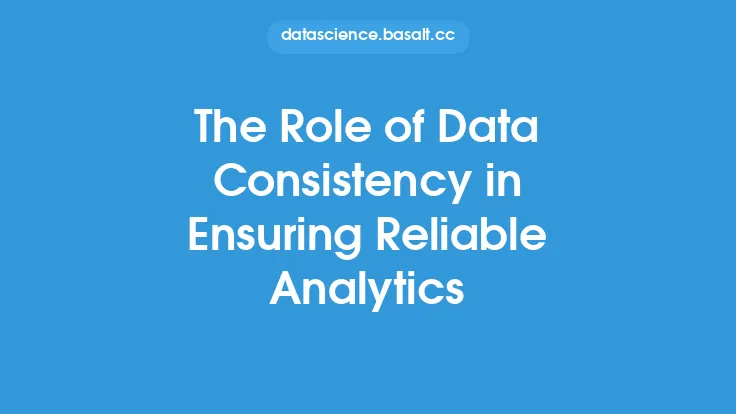Data completeness is a critical aspect of data quality that plays a vital role in ensuring reliable insights from data analysis. In today's data-driven world, organizations rely heavily on data to make informed decisions, and incomplete data can lead to inaccurate conclusions, poor decision-making, and ultimately, business losses. In this article, we will delve into the importance of data completeness, its impact on data analysis, and the techniques used to ensure complete and accurate data.
Introduction to Data Completeness
Data completeness refers to the extent to which a dataset contains all the required information to support accurate analysis and decision-making. A complete dataset is one that has all the necessary data elements, with no missing or null values, and is free from errors and inconsistencies. Data completeness is essential in various industries, including healthcare, finance, and marketing, where accurate data analysis is critical for making informed decisions.
The Consequences of Incomplete Data
Incomplete data can have severe consequences on data analysis and decision-making. When data is missing or incomplete, it can lead to biased results, incorrect conclusions, and poor decision-making. For instance, in healthcare, incomplete patient data can lead to misdiagnosis or inappropriate treatment, while in finance, incomplete transaction data can lead to incorrect financial reporting or fraudulent activities. Moreover, incomplete data can also lead to decreased customer satisfaction, reduced business efficiency, and increased costs.
Techniques for Ensuring Data Completeness
To ensure data completeness, several techniques can be employed. Data validation is one such technique that involves checking data for errors, inconsistencies, and missing values. Data validation can be performed using various methods, including data profiling, data quality metrics, and data visualization. Another technique is data imputation, which involves replacing missing values with estimated values based on statistical models or machine learning algorithms. Data imputation can be performed using various methods, including mean imputation, regression imputation, and multiple imputation.
Data Quality Metrics for Data Completeness
Data quality metrics play a crucial role in measuring data completeness. These metrics provide insights into the accuracy, completeness, and consistency of the data. Some common data quality metrics for data completeness include data completeness ratio, data accuracy ratio, and data consistency ratio. The data completeness ratio measures the proportion of complete data records to the total number of data records. The data accuracy ratio measures the proportion of accurate data records to the total number of data records. The data consistency ratio measures the proportion of consistent data records to the total number of data records.
The Role of Data Governance in Ensuring Data Completeness
Data governance plays a vital role in ensuring data completeness. Data governance involves establishing policies, procedures, and standards for data management, including data quality, data security, and data compliance. A well-defined data governance framework can help ensure that data is accurate, complete, and consistent across the organization. Data governance also involves establishing data stewardship, which involves assigning responsibility for data quality and data management to specific individuals or teams.
Best Practices for Ensuring Data Completeness
To ensure data completeness, several best practices can be employed. These include establishing clear data quality standards, implementing data validation and data imputation techniques, and providing training and awareness programs for data management staff. Additionally, organizations can establish data quality metrics and monitoring processes to track data completeness and identify areas for improvement. Regular data audits and data quality assessments can also help identify data completeness issues and ensure that data is accurate, complete, and consistent.
The Impact of Technology on Data Completeness
Technology plays a significant role in ensuring data completeness. Various technologies, including data quality software, data integration tools, and data analytics platforms, can help ensure data completeness. Data quality software can help identify and correct data errors, while data integration tools can help integrate data from multiple sources and ensure data consistency. Data analytics platforms can help analyze large datasets and identify patterns and trends that may indicate data completeness issues.
Conclusion
In conclusion, data completeness is a critical aspect of data quality that plays a vital role in ensuring reliable insights from data analysis. Incomplete data can have severe consequences on data analysis and decision-making, and various techniques, including data validation, data imputation, and data governance, can be employed to ensure data completeness. By establishing clear data quality standards, implementing data quality metrics and monitoring processes, and providing training and awareness programs, organizations can ensure that their data is accurate, complete, and consistent. Additionally, technology can play a significant role in ensuring data completeness, and organizations should leverage various technologies to ensure data quality and reliability.





